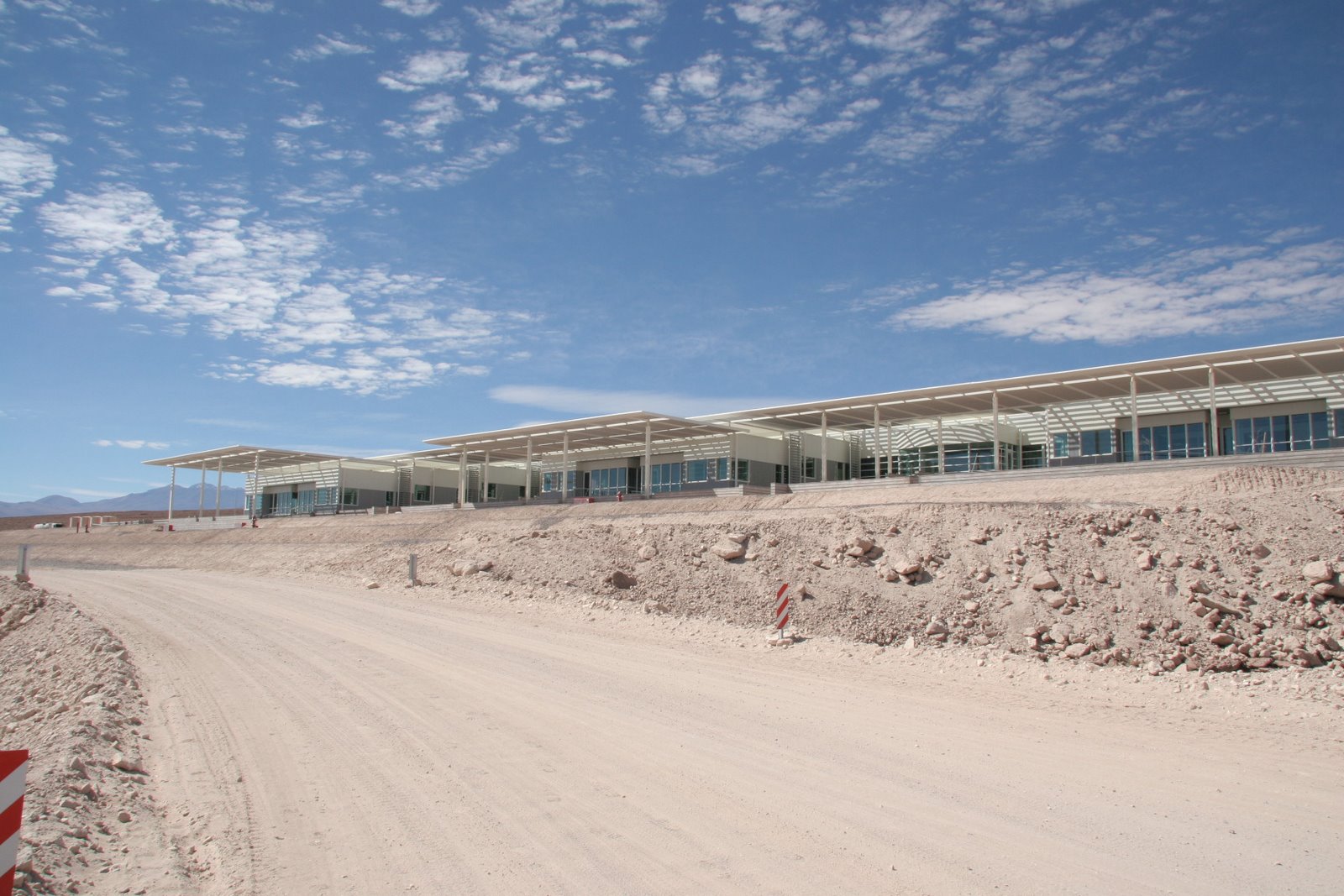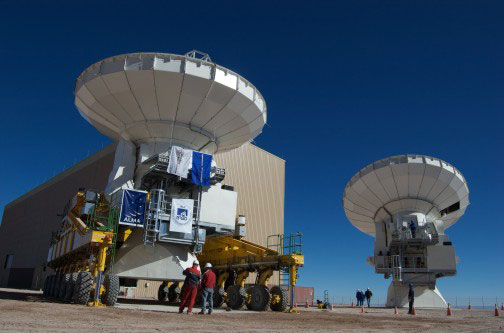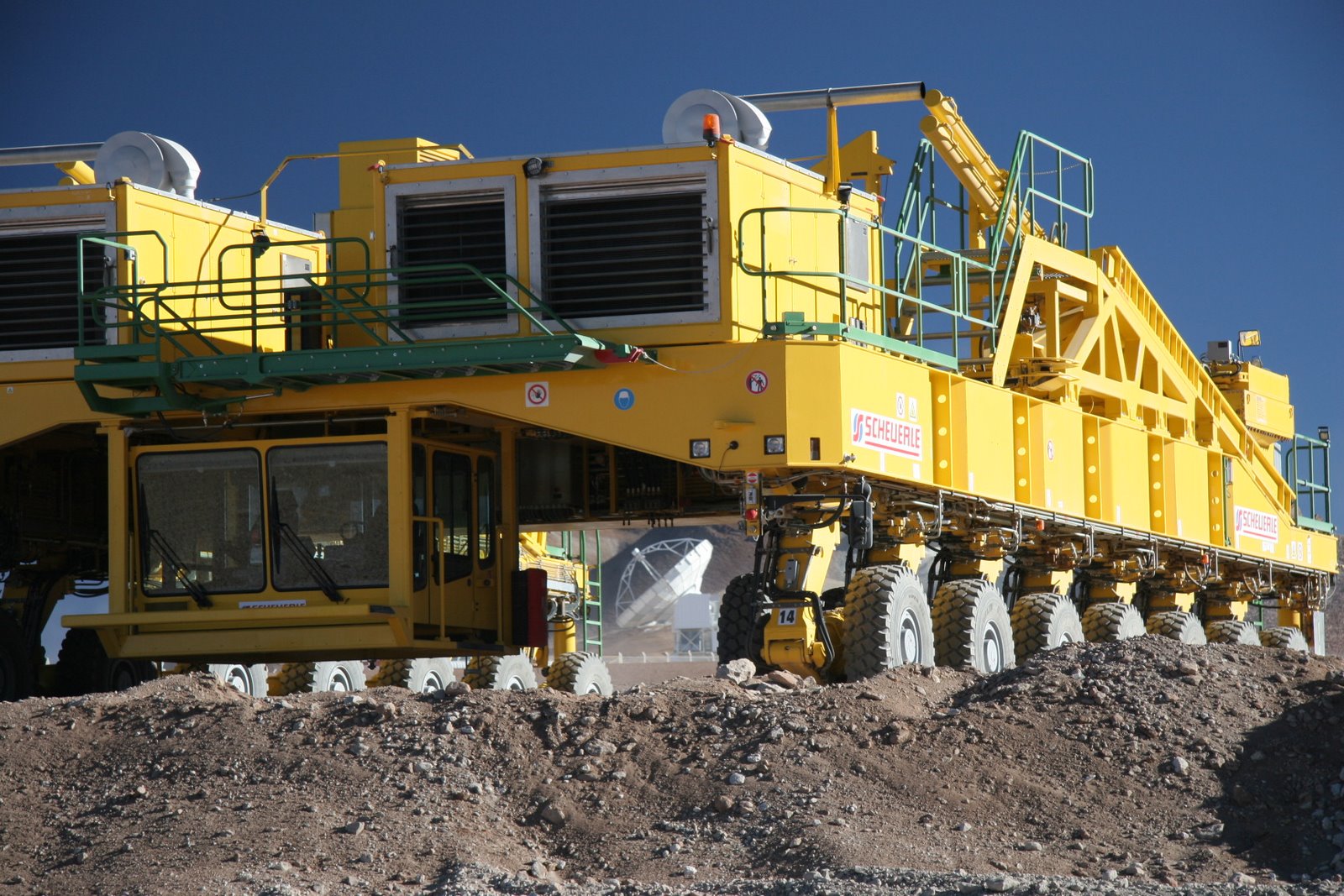You are here: NRAO Public Wiki>ALMA Web>AlmaNorthAmericanScienceAdvisoryCommittee>12Sep08Agenda (2009-01-15, AlWootten)
Edit wiki text
Edit
Attach
Print version
Contact Information for those calling in.
- Call date: 2008-09-12 08:30 EDT or 14:30 UT (Friday)
- Duration: 8 hr
- USA Number: 1-866-675-5385
- Outside USA Number: +1 517 444 6916
- Passcode: 8445333#
- Leaders: A. Baker, C. Carilli
- Attendance
- Agenda
- 1) 08:30 - 08:45 Closed Session
- 2) 08:45 - 09:15 Welcome from NRAO Director and discussion of role of ANASAC in global context (F. Lo)
- 3) 09:15 - 09:40 Project Status - construction (Russell/Wootten)
- 3) 09:40 - 10:00 ALMA operations and the NAASC (Carilli/Hibbard)
- 4) 10:00 - 10:15 Break
- 5) 10:15 - 11:00 (other) ASAC Charges (ASAC members; Wootten)
- 7) 11:00 - 11:15 Update on 2008 NAASC workshop and planning for 2009 (Evans)
- 8) 11:15 - 12:00 ANASAC Charge 1 (Subcommittee/Baker)
- 9) 12:00 - 13:00 Lunch
- 10) 13:00 - 13:40 Other ANASAC concerns (large programs, coordination with JWST, etc.)
- 11) 13:40 - 14:20 ANASAC Charge 3 (Baker/subcommittee)
- 11) 14:20 - 15:00 ANASAC Charge 4 (Baker/subcommittee/Russell)
- 12) 15:00 - 15:15 Break
- 13) 15:15 - 16:45 Closed session
- 14) 16:45 - 17:00 Summary of draft report to NRAO (Baker)
- Supplemental Material
 The Operations Support Facility Technical Complex. Photo by A. Beelen.
The Operations Support Facility Technical Complex. Photo by A. Beelen.
 Two Vertex antennas (no 1 and no 2) outside the Site Erection Facility.
Two Vertex antennas (no 1 and no 2) outside the Site Erection Facility.
 A Transporter appears to run over an antenna. Photo by A. Beelen. See other images and animations.
See other images.
A Transporter appears to run over an antenna. Photo by A. Beelen. See other images and animations.
See other images.
Attendance
ANASAC Members (Attendees in RED):- Andrew Baker (Rutgers) (2008) [Chair]
- John Bally (U. Colorado) (2008)
- Andrew Blain (Caltech) (2008) (ASAC Vice Chair, NA)
- Mike Fall (Space Telescope Science Institute) (2010)
- Tim Heckman (Johns Hopkins) (2010)
- Shardha Jogee (U. Texas) (2010)
- *Kelsey Johnson* (U. Virginia) (2009)
- Doug Johnstone (HIA/DAO, Victoria) (2008)
- J. Xavier Prochaska (Lick Observatory) (2010)
- Hsien Shang (ASIAA) (2011)
- Gordon Stacey (Cornell) (2009)
- Alycia Weinberger (DTM) (2009)
- Jonathan Williams (U. Hawaii) (2008)
- Mel Wright (UC Berkeley) (2008)
- J. Hibbard
- A. Wootten
- C. Carilli
- C. Brogan
- A. Russell
- F. Lo
- A. Evans
- C. Lonsdale
- J. Stoke
- P. Puxley (NSF)
Agenda
1) 08:30 - 08:45 Closed Session
2) 08:45 - 09:15 Welcome from NRAO Director and discussion of role of ANASAC in global context (F. Lo)
3) 09:15 - 09:40 Project Status - construction (Russell/Wootten)
- ALMA Biweekly Calendar
- See attachment below for a construction report.
3) 09:40 - 10:00 ALMA operations and the NAASC (Carilli/Hibbard)
4) 10:00 - 10:15 Break
5) 10:15 - 11:00 (other) ASAC Charges (ASAC members; Wootten)
7) 11:00 - 11:15 Update on 2008 NAASC workshop and planning for 2009 (Evans)
8) 11:15 - 12:00 ANASAC Charge 1 (Subcommittee/Baker)
ASAC Charge on science input into development plan See supplemental material below9) 12:00 - 13:00 Lunch
10) 13:00 - 13:40 Other ANASAC concerns (large programs, coordination with JWST, etc.)
11) 13:40 - 14:20 ANASAC Charge 3 (Baker/subcommittee)
NSF PI grants program and pre-ALMA science support See supplemental material below11) 14:20 - 15:00 ANASAC Charge 4 (Baker/subcommittee/Russell)
Future of ATF antenna See supplemental material below12) 15:00 - 15:15 Break
13) 15:15 - 16:45 Closed session
Membership: Select new ANASAC Chair (Baker/subcommittee) Draft Report14) 16:45 - 17:00 Summary of draft report to NRAO (Baker)
Supplemental Material
ANASAC Charges for Sept 12, 2008 Face to Face- Charge 1. The ANASAC has a standing charge to review the latest ASAC charges, and provide input to the ASAC members. We ask that the ANASAC pay particular to attention to the charge in which the JAO is asking the ASAC to take a prominent role in defining the scientific priorities for the ALMA development plan. Please discuss and recommend how the ANASAC can facilitate a mechanism to solicit the inputs and interests of the North American community and make sure the ASAC deliberations encompass the needs of the NA community.
- Charge 2. Please organize the NAASC science workshop for 2009.
- Charge 3. Continuation of interim charge II from January: "The NRAO asks the ANASAC to consider the issue of stimulating research in preparation for the use of ALMA, e.g., wide-field surveys to identify interesting targets, laboratory work on astro-chemistry, or theoretical work on star and galaxy formation, and how such preparatory research before ALMA is operational can be funded, as well as recommending avenues by which the NRAO or other organizations could promote such efforts." In light of the recent suggestion from the NSF/AST Division to convene a dedicated panel to review PI proposals on ALMA-preparatory work, we would like to separate this charge into 2 parts:
- 3A. Finalize the current ANASAC response to the charge: "The NRAO asks the ANASAC to consider the issue of stimulating research in preparation for the use of ALMA, e.g., wide-field surveys to identify interesting targets, laboratory work on astro-chemistry, or theoretical work on star and galaxy formation, etc." Existing draft by Blain will probably require modest changes if any.
- 3B. In the context of the recent NSF/AST suggestion of dealing with ALMA-preparatory PI proposals, consider potential ways to inform the community and to stimulate the submission of ALMA-preparatory proposals in the upcoming round of NSF/AST call for PI Proposals in November 2008. Also consider whether this suggested approach would be a reasonable long-term method of instituting an ALMA User Grants program. Volunteers for F2F preparation: Heckman, Johnson, Prochaska, Williams. Carilli will check with NSF about official stand on separate ALMA-related review panels.
- Charge 4: The NRAO asks the ANASAC for considerations and suggestions on the potential use of the NA ALMA prototype antenna, once activities at the ATF terminate in Q3 2008. Three options have been proposed to date:
- A) Incorporate into the ALMA array: This is possible, but not easy. The antenna cannot be transported with the transporter nor can it sit on a standard foundation. It would in effect be a fixed antenna that must be maintained in situ at the high site, and hence be expensive to maintain. Likewise, it would require a major (costly) retrofit, on top of the cost of taking it apart, transporting, and reassembling in Chile.
- B) Sell it, and recycle the money back to ALMA, if a buyer can be found.
- C) Use it for ALMA-related science, ie. give it away to an institution that can ensure good science comes out, with access by all of the NA community. The two mm/submm arrays come to mind, but it is also a superb single dish and, on a superb sight, could do interesting science as well. The question is: how to be transparent and fair in deciding who gets it? The cost of transport and reassembly would be the responsibility of the receiving party. Volunteers for F2F preparation: Bally, Johnstone, Wright. Bally: more details are needed here-- costs of moving? operating? Precdent of 12m (sold for a token price to an institution that would continue to give access to U.S. scientific community) may be instructive. ESO antenna is being disposed of separately. This charge is coming in part due to queries from NSF.
Charge 3b: clarification email on NSF position on pre-ALMA PI grant proposals Latest input from Phil Puxley at NSF: Dear Fred Sorry for the delay in replying, it took me a little while to pull together comments for various interested parties. Any 'ALMA preparatory' proposals should be submitted to AST's individual investigator grants (AAG & ATI) competitions by the November deadlines and will be considered in the broader context of the AAG and AST program along with everything else we receive. The proposals can include any technique e.g. observations, theory, laboratory, instrumentation. They should be clearly identified as research in preparation for ALMA. They will be evaluated on NSF's two review criteria: Intellectual Merit and Broader Impacts. In all these regards they do not deviate from our normal procedures and so this process does not need "formal adoption". We will, however, tag and track these proposals, in part to assess the level of interest and demand. AST is not planning to make any specific announcement although at the AAS town hall, this past June, Eileen did remind people that we received proposals on any topic, including preparatory work for future facilities, and used 'theory' and 'laboratory astrophysics for ALMA' as examples. It is the responsibility of NRAO (and ANASAC) to get the word out to the community. Nothing has been decided with respect to ALMA observing proposals. The "approach" we have been discussing applies only to ALMA preparatory proposals at this time. Regards Phil
Some initial estimates of costs of retrofitting or moving ATF antennas NEED FROM ADRIAN -- ChrisCarilli - 03 Sep 2008 * Sep08newsltr.pdf: Recent ALMA Construction News * Sep08newsltr.pdf: Recent ALMA Construction News * ANASACSep08.ppt: ALMA Construction Status
| I | Attachment | Action | Size | Date | Who | Comment |
|---|---|---|---|---|---|---|
| |
ANASAC-2008f2f.pdf | manage | 2 MB | 2008-09-05 - 16:05 | JohnHibbard | supporting material - FY08 PR, FY09 PP, 09-13 LRP, CASA |
| |
ANASAC08_carilli.pdf | manage | 6 MB | 2008-09-12 - 08:37 | ChrisCarilli | Carilli ANASAC -- NAASC/ALMA Ops presentation |
| |
ANASACSep08.ppt | manage | 20 MB | 2008-09-12 - 10:48 | AlWootten | ALMA Construction Status |
| |
Sep08newsltr.pdf | manage | 16 MB | 2008-09-05 - 16:22 | AlWootten | Recent ALMA Construction News |
Edit | Attach | Print version | History: r11 < r10 < r9 < r8 | Backlinks | View wiki text | Edit wiki text | More topic actions
Topic revision: r11 - 2009-01-15, AlWootten
- Webs
-
 ALMA
ALMA
-
 NAASC
NAASC
-
 SCIIPT
SCIIPT
-
 CDL
CDL
-
 CICADA
CICADA
-
 Ccs
Ccs
-
 Littlethings
Littlethings
-
 Cville
Cville
-
 DSAA
DSAA
-
 EVLA
EVLA
-
 FASR
FASR
-
 GB
GB
-
 Computing
Computing
-
 Data
Data
-
 Dynamic
Dynamic
-
 Electronics
Electronics
-
 Gbtpipeline
Gbtpipeline
-
 Knowledge
Knowledge
-
 Mechanical
Mechanical
-
 Observing
Observing
-
 WbandVLBACal
WbandVLBACal
-
 Obsreports
Obsreports
-
 Operate
Operate
-
 PTCS
PTCS
-
 OOF
OOF
-
 ServoImprovementsHome
ServoImprovementsHome
-
 ServoSiteAcceptTestProcs
ServoSiteAcceptTestProcs
-
 Pennarray
Pennarray
-
 Projects
Projects
-
 Recreation
Recreation
-
 Scicenter
Scicenter
-
 Skynet
Skynet
-
 Software
Software
-
 CLEO
CLEO
-
 StaffEvents
StaffEvents
-
 TACTool
TACTool
-
 HPC
HPC
-
 JVLA
JVLA
-
 KPAF
KPAF
-
 Library
Library
-
 Main
Main
-
 Metrics
Metrics
-
 NGVLA
NGVLA
-
 NM
NM
-
 Computing
Computing
-
 Electronics
Electronics
-
 OSAA
OSAA
-
 OSX
OSX
-
 SRDP
SRDP
-
 Software
Software
-
 Algorithms
Algorithms
-
 CASA
CASA
-
 Splat
Splat
-
 System
System
-
 VLBA
VLBA
 Copyright © by the contributing authors. All material on this collaboration platform is the property of the contributing authors.
Copyright © by the contributing authors. All material on this collaboration platform is the property of the contributing authors. Ideas, requests, problems regarding NRAO Public Wiki? Send feedback


